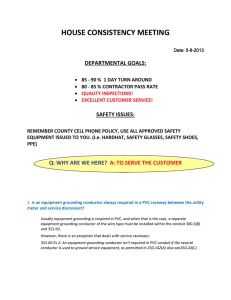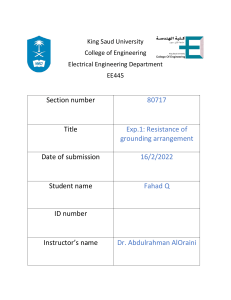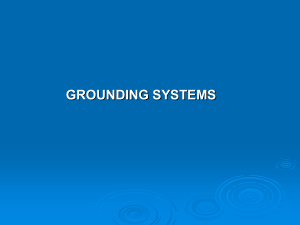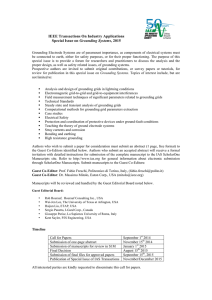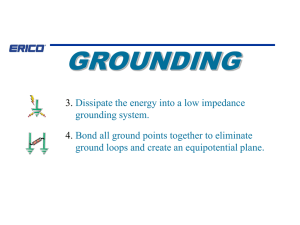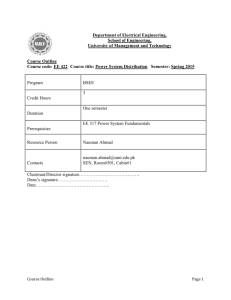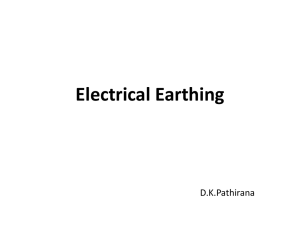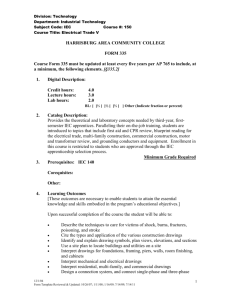here
advertisement
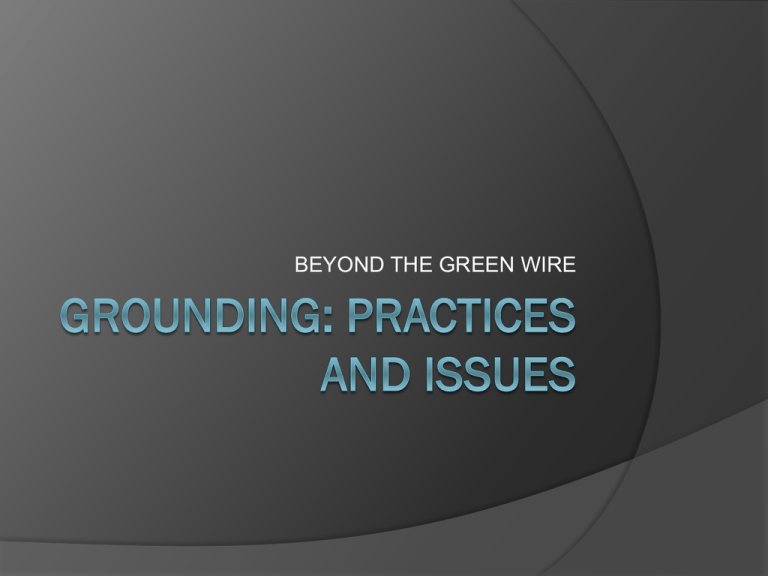
BEYOND THE GREEN WIRE Is grounding science, art or black magic? Science – having the data and knowledge to competently design a system Art – always possible to manipulate a design for a more elegant solution based on factors such as budget or the environment Black magic – the perception created with gaps in knowledge / understanding We must choose a perspective BYNUM’S 5 LAWS OF ENGINEERS An engineer is empirically oriented An engineer is data driven An engineer in one way or another sells his/her time and expertise Liability concerns Due diligence issues Grounding, bonding, surge, lightning Cannot be treated discretely Each is an element of a coherent whole All may not be necessary but none can be manipulated separately Why grounding / earthing? References a structure to the environment – potentials rise and fall together Set points for circuit breakers Fuse selection Defines and identifies ground reference for ground fault and arc flash relays Coordination of the system Where to start? Whether in design, forensics or rehab take a line from medical ethics “First do no harm” Using the first two points of Bynum’s Law Engineers are compelled by training and discipline to design TO something Anything else may be an educated guess, informed guess or lucky guess… but still a guess With grounding we design between what we want or need and what the environment allows Point #2 of Bynum’s Law When the required data is not available the tendency becomes using a formerly successful “boilerplate” design or to “overdesign” effectively becoming a guess Standards IEEE Std. 80 (1986) IEEE Std. 142-2007 (Green Book for Commercial / Industrial Facilities) IEEE Std. 1100-2007 (Emerald Book for Electronics) The perfect world The engineer will have a certified “start point” in the form of results from a soil resistivity test Fairly reliable predictor of grounding electrode performance Soil Resistivity Tests 4 Point Wenner Method Test developed in 1915 by Dr. Frank Wenner of NIST for U.S. Bureau of Land Management Most accurate test Used by civil engineers to locate water table but CE test protocol may be problematic for the electrical engineer Soil Resistivity Tests Schlumberger Array developed by Conrad Schlumberger of France in the 2nd decade of the 20th century These are typically “green field” tests Factors affecting resistivity Moisture Temperature (Sandy loam with a 15.2% moisture content @ 32 deg. F [ice] has almost 3 times the resistivity of the same sample @ 32 deg. F [water]) Soil type – it has been reported the Metroplex has over 250 separately identifiable soil types Factors affecting resistivity Depth – varies with soil type, moisture content and freeze line NOTE! There is a very real correspondence between resistivity and corrosion issues Electrolytes in the soil (active, pH issues) Pollution issues Rules of thumb Most useful when talking about thumbs Designs generally specify 18” deep and 18”-24” outside of slab (drip line) At 18” the conductor merely connects the electrodes 30” and below (due to moisture content and freeze line) the conductor begins to act as an electrode in and of itself Design Considerations Types of Grounding Systems Facility Layout Conductor & Electrode Materials Special Considerations Types of Grounding Systems Solidly Grounded Low Resistance Grounding High Resistance Grounding Ungrounded System Layout Grid Counterpoise Instrumentation – Dedicated System Conductor Materials Copper or Tinned Copper Aluminum Braided Concentric Insulated Bare Electrode Materials Galvanized Steel Copperclad Steel Zinc or Magnesium Solid Shapes Graphite Chemically Enhanced Ground Rod Ufer Special Considerations Risk of Copper Theft Soil Reactivity Raw and Finished Products of Facility Depth of Conductors Cathodic Protection Systems Other Utilities Acceptance & Maintenance Grounding is not an “Install & Forget” Acceptance Testing & Documentation Scheduled Testing & Maintenance Why establishing a baseline is important. We have a problem. Summary Grounding is a fundamental Infrastructure system Yes, it can be expensive to get right. It is more expensive to correct problems after construction. It is most expensive when a ground system failure causes injury, equipment damage or loss of product.
